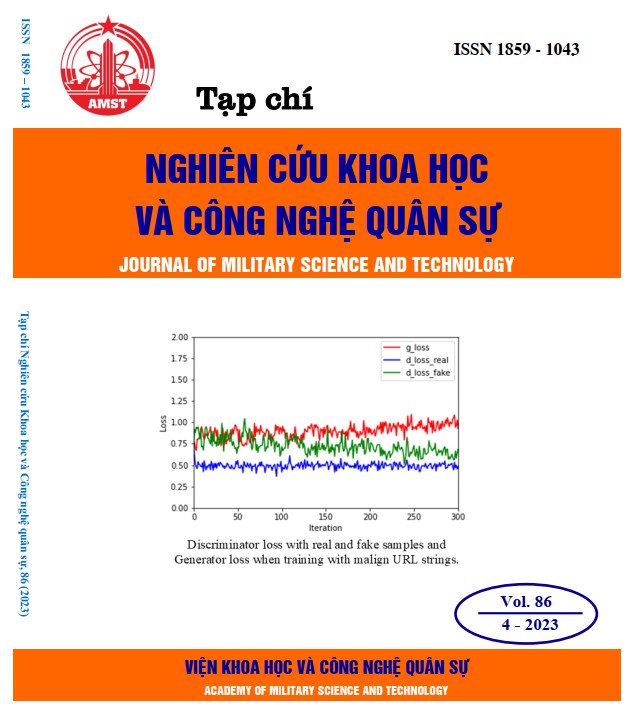Prediction of earing in deep drawing of the cylindrical cup of stainless steel SUS304 by numerical simulation
457 viewsDOI:
https://doi.org/10.54939/1859-1043.j.mst.86.2023.129-136Keywords:
Anisotropy; Earing; Deep drawing; Barlat 89 yield criterion; Stainless steel.Abstract
After the deep drawing of cup-shaped features, the product develops a "earing" due to the anisotropy of the sheet metal. Predicting the formation of "earing" during the deep drawing process is crucial for decreasing this fault. The goal of this work is to forecast the production of "earing" during the deep drawing process of a cup-shaped detail made of stainless steel SUS304 by modeling and experimental results. In a simulation employing the experimentally obtained anisotropy coefficients of stainless steel SUS304, the Barlat 89 yield criteria was used. The findings demonstrate parallels in the creation of the "earing" and demonstrate that the Barlat 89 model may be used to anticipate it.
References
[1]. Đinh Văn Phong, “Lý thuyết gia công kim loại bằng áp lực”, Học viện Kỹ thuật Quân sự, (2003) (in Vietnamese).
[2]. Đinh Bá Trụ,“Cơ sở lý thuyết biến dạng dẻo kim loại”, Học viện Kỹ thuật Quân sự, (2004) (in Vietnamese).
[3]. Nguyễn Tất Tiến, ,“Lý thuyết biến dạng dẻo kim loại”, NXB Giáo dục, (2004) (in Vietnamese)..
[4]. Naoyuki Kanetake, Yasuhisa Tozawa, “Crystallographical Calculation of earing in deep drawing under various conditions”, Textures and Microstructures, Vol 7, pp 131 – 147, (1987). DOI: https://doi.org/10.1155/TSM.7.131
[5]. Z. Marciniak, J. L. Duncan, S. J. Hu, “Mechanics of sheet metal forming”, Butterworth Heinemann, (2002).
[6]. Dorel Banabic, “Sheet metal forming processe”, Springer Heidelberg, Dordrecht London New York, (2010). DOI: https://doi.org/10.1007/978-3-540-88113-1
[7]. Kenza Bouchaâla, Elhachmi Essadiqi, Mohamed Mada, Mohamad Fathi Ghanameh, Mustapha Faqir, Mohamed Meziane, “Prediction of earing in cylindrical deep drawing of aluminum alloys using Finite Element Analysis”, International Journal of Mechanical and Production Engineering, ISSN(p): 2320-2092, ISSN(e): 2321-2071 Volume- 6, Issue-10, (2018).
[8]. A. M. Zaky, A. B. Nassr, M. G. El-Sebaie, “Optimum blank shape of cylindrical cups in deep drawing of anisotropic sheet metals”, Journal of Materials Processing Technology 76, pp. 203–211, (1998). DOI: https://doi.org/10.1016/S0924-0136(97)00349-X
[9]. R. Padmanabhan , M.C. Oliveira, J.L. Alves, L.F. Menezes, “ Influence of process parameters on the deep drawing of stainless steel”, Finite Elements in Analysis and Design 43, pp. 1062–1067, (2007). DOI: https://doi.org/10.1016/j.finel.2007.06.011
[10]. S. Izadpanah, S. H. Ghaderi, M. Gerdooei, “Prediction of earing in deep drawing of anisotropic aluminum alloy sheet using BBC2003 yield criterion”, Journal of Computational and Applied Research in Mechanical Engineering, Vol. 6. No. 2, pp. 47-55, (2017).
[11]. Pawan S. Nagda, Purnank S. Bhatt, Mit K. Shah, “ Finite Element Simulation of Deep Drawing Process to Minimize Earing”, International Journal of Mechanical and Mechatronics Engineering, Vol 11, No2, (2017).
[12]. Haibo Wang, Mingliang Men, Yu Yan, Min Wan, Qiang Li, “Prediction of Eight Earings in Deep Drawing of 5754O Aluminum Alloy Sheet”, Wang et al. Chin. J. Mech. Eng. 32:76, (2019). DOI: https://doi.org/10.1186/s10033-019-0390-2







